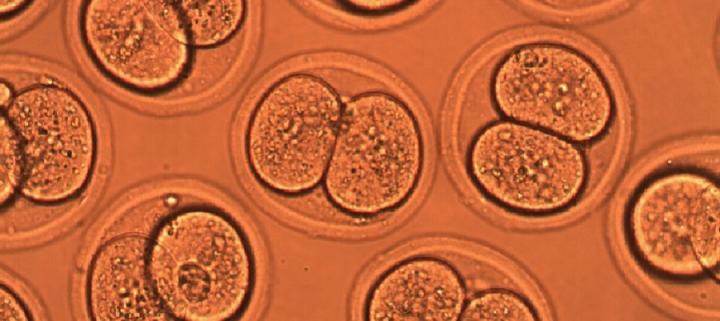Embryo Cryopreservation
Information about the long term storage of transgenic lines through embryo cryopreservation

Embryo cryopreservation for rats and mice is robust, and preserves the whole genome, rather than the haploid genome (as in sperm freezing).
The number of embryos stored is determined by the mating strategy used to produce the embryos for cryopreservation (see below). The number of rounds of embryo freezing that will be required to reach the embryo numbers necessary may vary between strains. This makes it hard to predict the exact numbers of females that will be needed to produce the number of embryos required. To obtain the optimum number of embryos to cryopreserve a line, multiple cryopreservation sessions may be required.
| Option (male x female) | Genotype of progeny | Number of frozen embryos required |
|---|---|---|
| Homozygous x homozygous | all homozygous | ~200-250 |
| Homozygous x wildtype | all heterozygous | ~200-250 |
| Heterozygous x heterozygous | varying | >300 |
| Heterozygous x wildtype | varying | >400 |
CTC does advise to use a commercial breeder to provide the females, as breeding sufficient females for embryo freezing in-house is a major undertaking.
For mice, embryos can be generated by either superovulation and natural mating of males and females, or by IVF. IVF requires less males and females to generate the required number of embryos for freezing.
For rats, the only option to generate embryos is superovulation and natural mating of males and females.
Researcher’s responsibilities during process:
- Complete the ‘Embryo Cryopreservation Request Form’ (see below) and return it to the CTC manager.
- If using IVF, provide CTC with 1-2 proven males and up to 20 (ideally 3-4 week old at the time of procedure) female mice.
- If using natural matings and superovulation, provide CTC with up to 20 proven males with the same number of young females per session.
CTC’s responsibilities during process:
- Organise the purchase of wild type female recipient mice (if required) on behalf of the researcher.
- Coordinate superovulations, matings (if necessary), embryo harvesting and freezing.
- Store 25-30 embryos per straw in specialized cryopreservation straws in a liquid nitrogen cryostore.

